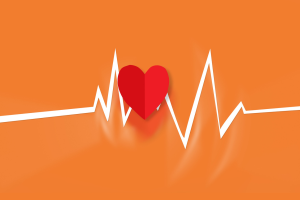Why CPR Certification Now Includes STD Awareness Training

Cardiopulmonary resuscitation (CPR) is a life-saving technique taught to individuals from all walks of life — from medical professionals and emergency responders to teachers, parents, and workplace staff. As life-threatening situations can occur anytime, anywhere, being trained to perform CPR equips people to act quickly and effectively when someone’s life is at risk.
However, what was once strictly a technical and mechanical procedure has evolved into a more comprehensive practice — one that now includes awareness about sexually transmitted diseases (STDs) and other bloodborne pathogens.
Modern CPR certification programs now incorporate STD awareness training to ensure that responders can provide help safely, both for themselves and the victim. This shift reflects a growing recognition of the risks associated with exposure to blood and bodily fluids, as well as the need to promote informed and responsible emergency care.
In this article, we explore why STD awareness has become an essential part of CPR certification, what the training entails, and how it benefits everyone involved in emergency response.
The Changing Scope of CPR Certification
Traditionally, CPR training has focused on techniques, including chest compressions, rescue breathing, and the use of automated external defibrillators (AEDs). But today’s CPR certification courses are more than just mechanical drills. They emphasize safety, situational awareness, and infection control, preparing rescuers for the reality of emergencies.
Adding STD awareness training ensures that participants understand the potential risks associated with performing CPR and first aid, particularly when there is exposure to blood, saliva, vomit, or other bodily fluids. This is not to cause fear, but to ensure that responders are educated and prepared.
Understanding the Risk: STDs and Emergency Response
While CPR is rarely a route for STD transmission, certain situations can present risks, especially during direct contact with blood or open wounds. STDs that can be transmitted through blood include:
- HIV (Human Immunodeficiency Virus)
- Hepatitis B (HBV)
- Hepatitis C (HCV)
These are considered bloodborne pathogens, and transmission can occur when infected blood enters the bloodstream of another person through open cuts, mucous membranes (eyes, mouth), or needle-stick injuries.
Some CPR scenarios, particularly those involving trauma or bleeding injuries, may lead to such exposure. For example:
- Performing CPR on someone with bleeding from the mouth due to trauma or a seizure.
- Administering first aid to a person with open wounds or severe lacerations.
- Providing mouth-to-mouth resuscitation without a barrier device.
Such situations underscore the importance of universal precautions and protective measures, which are now integral components of CPR training.
What STD Awareness Training in CPR Certification Covers
CPR courses have expanded to include infection prevention modules, which typically cover the following areas:
1. Introduction to Bloodborne Pathogens
Participants learn about common infections transmitted through blood, such as HIV, HBV, and HCV. The training explains how these diseases spread, how long they can survive outside the body, and the conditions required for transmission to occur.
2. Modes of Transmission in Emergency Care
Trainees are taught the specific ways infection can occur during CPR or first aid, including skin-to-blood contact, mucous membrane exposure, and contact with contaminated objects.
3. Use of Personal Protective Equipment (PPE)
The course introduces tools like:
- Disposable gloves
- CPR face shields with one-way valves
- Face masks and eye protection
Responders are instructed on how to properly use, remove, and dispose of PPE to minimize the risk of exposure.
4. Universal Precautions
All bodily fluids are treated as potentially infectious. Trainees learn to follow strict hygiene and barrier protocols in all first aid situations.
5. Post-Exposure Protocols
The training provides a step-by-step guide on what to do if exposure occurs, such as washing the area, reporting the incident, and seeking medical evaluation, including the potential use of post-exposure prophylaxis (PEP) in the case of HIV.
6. Myth-Busting and Reassurance
Many people fear they might contract HIV or another STD from performing CPR. The training corrects these misconceptions by explaining the actual risk levels and providing facts to help alleviate fear while reinforcing safety.
Why This Addition Matters
Including STD awareness in CPR certification is not just about covering legal bases or adding content — it’s a necessary evolution in response training. Here’s why it’s so important:
1. Empowers Responders to Act Confidently
Fear of infection is one of the biggest reasons people hesitate to perform CPR. When individuals are trained on how to protect themselves, they are far more likely to step in and help.
2. Protects the Responder and the Victim
Knowledge of STD transmission and protective measures ensures safety on both sides. Rescuers avoid unnecessary exposure, and victims receive care with reduced risk of cross-contamination.
3. Promotes Public Health Awareness
CPR classes reach a wide audience — often people who are not in healthcare. Including STD education increases the general public’s understanding of transmission risks and prevention, contributing to better overall health literacy.
4. Meets Occupational Health Standards
For workplaces, particularly in healthcare, education, or public service sectors, CPR training that includes STD awareness aligns with OSHA’s Bloodborne Pathogen Standard, reducing liability and enhancing workplace safety.
The Legal and Ethical Responsibility
In many countries, CPR and first aid responders are protected by Good Samaritan laws, which provide legal immunity when offering emergency assistance in good faith. However, organizations that certify individuals for CPR, such as the American Heart Association (AHA) and the Red Cross, are ethically obligated to teach people how to protect themselves as well.
Additionally, workplace safety regulations in many regions require employees to be trained in infection control, especially if they are expected to provide emergency care. Incorporating STD awareness into CPR certification helps organizations meet these legal and ethical obligations.
How to Get Certified with STD Awareness Included
If you’re planning to take a CPR course or get recertified, look for programs that include training on infection control and bloodborne pathogens. Many reputable organizations already offer this, including:
- American Red Cross
- American Heart Association (AHA)
- National Safety Council (NSC)
- Occupational Safety and Health Administration (OSHA) certified providers
These programs typically combine online modules with hands-on training, making it easy to complete the course with a full understanding of both CPR technique and infection prevention.
Final Thoughts: Knowledge Is the First Step to Safety
CPR is one of the most selfless acts a person can perform — offering help to someone in critical need, often with no expectation of reward. But it should never come at the cost of the responder’s health. The integration of STD awareness training into CPR certification ensures that lifesaving care is administered safely, responsibly, and confidently.






